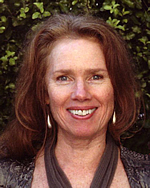Mind/Body Approaches
The wisdom of the body is powerful and can go a long way toward resolving
mental and emotional issues. Unfortunately, most of us are conditioned
not to listen to the language of the body, which is expressed through sensations,
impulses, intuitions and "gut" feelings - including chronic pain and
illness. We are educated instead to give greater value to our minds, our
cognitive processes. These capacities are obviously important, but too
often override equally valuable messages from other aspects of ourselves.
We can become "stuck in our heads".
When people are able to identify and respond to messages from the body outside the realm of rational thought they start to develop a greater sense of trust in themselves. For the mind can think anything, true or not. On the other hand, the body does not lie.
In addition to my classical education as a psychotherapist, I have been
trained in a number of methods that effectively address psychological problems
through working with the body. I continue to study newer modalities that
emerge as research on the workings of the brain illustrates its amazing
plasticity and its intimate relationship to the body.
Bioenergetic Analysis
Bioenergetic Analysis increases a person's ability to feel grounded -
to be more aware and present in the body. It also works to soften characteristic
muscular tensions created by years of reacting to life in particular ways.
When the body loosens these tensions through therapy, one has more energy
available to respond to life in new and more satisfying ways. One feels
more "whole", with a stronger sense of self and personal power.
Bioenergetic therapy adheres to the standards of traditional talk psychotherapy,
incorporating particular physical exercises according to the needs of the
client. Different exercises are used to ground, to enhance bodily sensation
or to express particular emotions. Some exercises may require therapist
touch, but never without the client's understanding and permission.
Alexander Lowen M.D. created Bioenergetic Analysis in the 1940s after his
personal work as a patient of Wilhelm Reich M.D., one of Sigmund Freud's
closest colleagues. Reich extended the work of psychoanalysis into the
realm of the body, focusing on "vegetative processes" that indicate
a person's emotional and mental state. These signs of bodily activation
or distress include changes in skin coloration, breathing patterns, muscle
tension, facial expression, gestures or sensations, among other physical
phenomena.
Lowen felt he "became more fully alive" in his work with Reich. He adapted
Reich's approach and applied it to his own patients. He saw a person's
ability to be "grounded" in his or her physical being as reflecting
his/her ability to be grounded in reality itself. In other words, the more
a person was able to experience all aspects of self---and not just live
in the mind---the more that person felt fully alive and discovered more
opportunities to pursue healthy pleasure and purpose in life. The findings
of Reich and Lowen are now being validated by recent advances in the neurological
sciences.
"I had no idea I had a life other than what I thought about. I lived from the
head up, ignoring what I felt until my life fell apart and I had to feel,"
explained one client after a course of Bioenergetic Analysis. "Now I listen
to my heart and my gut just as much as my mind. Life is easier, and much more
fun."
Somatic Experiencing
Somatic Experiencing is an exciting and effective method of resolving trauma. Based on the groundbreaking research and clinical work of Peter Levine Ph.D., Somatic Experiencing offers a gentle and safe way for a person to address traumatic experiences that have hampered his/her ability to enjoy life.
Often we think of trauma as something definitive and abrupt, like a car accident or war experience. This is acute trauma, but many of us have lived with other types of trauma that take place over time and have equal ability to create havoc in our lives. Trauma is less an event than it is a response from the nervous system to perceived threat and danger. Therefore, suffering the parenting of a raging alcoholic or a difficult hospitalization can be as traumatizing as fighting in a war.
Humans respond to trauma physiologically just like any other animal, through
the responses of fight, flight and freeze. When you can't run, and you can't
fight back, your body goes into a kind of numbness to protect against pain. Unlike
other animals, however, who once the danger passes physically shake out the frozen
energy, humans suppress what feels like out-of-control movements. The residual
energy stays trapped in the nervous system, interfering with its normal responsive
mechanisms. A person with unresolved trauma responds to life's ordinary stresses
with oversized life-or-death reactions, causing much unnecessary suffering to
themselves and those around them.
Somatic Experiencing gently attunes the client's attention to body sensations
and returns the nervous system to its optimal functioning, allowing people to
relax and respond more effectively to life's pressures. It returns the person
to a sense of personal agency, the ability to feel "I can" - the opposite
of the helplessness and powerlessness trauma creates.
Trauma Reducing Exercises (TRE)
TRE or Trauma Reducing Exercises is a specific set of movements designed to help
the body heal from trauma through accessing the autonomic, or involuntary, nervous
system. In this approach, prescribed exercises build up stress in the legs that
is then released into the deep inner muscles of the pelvis. These muscles, in
particular the psoas muscles, tend to hold strong and chronic tension from life's
negative events. The exercises promote natural shaking and vibrations in this
deep musculature which result in greater calmness and sense of safety in the
world. I have observed faster progress in therapy among those clients who use
these exercises regularly at home as an adjunct to their sessions.
The exercises were developed by Bioenergetic therapist David Berceli, who has spent most of his adult professional life working with victims of trauma in some of the most war-torn areas of the world such as the Sudan and Israel/Palestine. The exercises are built upon his own experiences responding to violence. He has reported considerable progress among victims of violence in the Middle East and Africa who he formed into groups to do these exercises together and support one another in healing.
EMDR
EMDR stands for Eye Movement Desensitization and Reprocessing. It was developed by Francine Shapiro PhD. This approach also works directly with the nervous system using alternating gentle and rhythmic stimulation through eye movement, touch or sound. The therapist helps the client get in touch with a particular issue and then uses the stimulation while the client revisits images and memories related to the issue. As the client alternates his/her attention between the issue and the stimulation, new neural pathways are formed.
EMDR helps free difficult memories and feelings that remain "trapped" from
a triggering event by replacing them with new associations that are less emotionally
disturbing. EMDR may be applied to most issues that arise in traditional talk
therapy and can often
facilitate the pace of movement through the issue. While EMDR can sometimes feel emotionally challenging within the session, most clients welcome repeated sessions of this approach and report feeling much calmer in general as a result.
Thought Field Therapy and Emotional Freedom Technique are two other methods I teach that employ self-tapping to lessen anxiety and gradually loosen rigid response patterns.
Meditation and Visualization
While I do not employ meditation and visualization during most of my sessions
I frequently teach forms of them for clients to use at home as needed. Each can
enhance the work of therapy when practiced regularly. Meditation has been shown
to lower blood pressure and quiet the nervous system. Visualization helps repattern
ineffective ways of viewing the world with more positive and expansive possibilities.
Both enlarge a person's capacity to experience life more richly.

